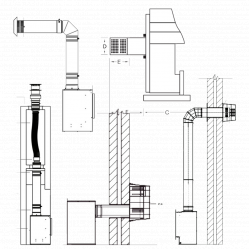Kohlangaz Durlston EFC Gas Fire, Coal Effect, Balanced Flue

Technical Details
| Product Title | Kohlangaz Durlston EFC Gas Fire, Coal Effect, Balanced Flue |
|---|---|
| Product Keyword | Kohlangaz Durlston EFC, Gas Fire, Coal Effect, Balanced Flue, Fireplace |
Product Description
Kohlangaz Durlston EFC Gas Fire
The Kohlangaz Durlston EFC is a stylish gas fire designed for homes with a balanced flue system. Its realistic coal effect creates a warm and inviting atmosphere in any living space.
- Realistic coal effect for a traditional fireplace aesthetic
- Efficient Class 2 balanced flue system suitable for homes without a conventional chimney
- Easy Flame Control (EFC) technology for simple operation
- High heat output for warming larger rooms effectively
- Piezo ignition system ensuring reliable and quick start-up
- Protective glass front for safety and improved efficiency
- Customizable fascia and frame options to match your decor
- Designed for use with natural gas or propane
- Comes with a manufacturer warranty for peace of mind
- Compliant with the latest energy efficiency and safety standards
Reviews
Gas Fires > Balanced Flue Gas Fires

Balanced Flue Gas Fires
A balanced flue system is an air-tight flue system that draws clean air for combustion into the appliance and expels toxic gases out through the same piping network. This piping network is double walled, so combustion air is drawn in through the outer pipe and gases are vented out through the internal pipe. As a result, only room sealed (glass fronted) gas fires can be installed using this type of flue system. At Firebox Stoves, we supply a large range of balanced flue gas fires, available in a range of different sizes and styles to suit different interiors. Our range of balanced flue gas fires are available in portrait or landscape designs and can be fitted into an existing chimney breast or built into a wall or false wall, depending on space available and the desired location of the appliance. Our balanced flue gas fires are also available with a range of different fuel bed types (coal, logs, driftwood or pebbles), and some even have the option of different flame colours!




